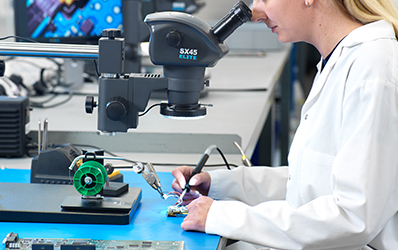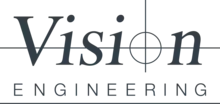What is working distance?
In the world of stereo microscopy there is more than one definition of the term ‘working distance’. Some say it is the distance from the bottom of your microscope to the subject. There are others that will argue that it is the distance from the lowest surface of your lowest optic, or some other similarly identified point. Whichever specific point you choose it essentially comes back to the space between your microscope and the in-focus point on a subject.
This is not to be confused with the total space under the stereo microscope, space is also needed for the subject. So while the working distance is fixed, the position of the microscope can still be moved up and down to allow for subjects to be positioned.


So why is this relevant to me? Why should I care about working distance?
In the ideal world you shouldn’t have to care and there would always be the space to do what you want to do. However, in the real world you have to deal with the laws of physics relating to in-focus magnification versus distance from the lens.
To change the working distance of a stereo microscope it is essential to change the objective lens. Objective lenses are fitted to the subject end of the microscope and will typically be magnifiers or reducers. These adjust the magnification as well as the working distance.
Changing to a higher power objective lens increases the overall magnification and the working distance reduces. Conversely adding a reducing objective lowers the overall magnification but increases the working distance.



What about camera lenses that can focus without changing the distance to the subject?
One thing you will notice about camera lenses is they are relatively large compared to microscope objectives. The complex optics inside the camera lens require space to move and the closer the subject gets to the lens the more movement is required to achieve focus. Although this would be an excellent addition in an objective, again we are hampered by the limitations of physics.
So, working distance is connected to magnification. What if I need long working distance, without reducing the magnification?
This situation is common, wanting the best of both, and there is a way to achieve this. As well as increasing the magnification by changing the objective lens it is also possible to increase magnification by using higher power eyepieces or inserting a multiplier above the zoom body.
For digital microscopes the equivalent would be to use digital zoom which is applied after the optical magnification is exceeded. The benefits of this are:
- A reducing objective can be added to a stereo microscope to increase the working distance and the reduction in magnification can be countered with the addition of a multiplier. Meaning tools, or subjects can be placed under the microscope without being impaired by the working distance. Items can be manipulated more easily and difficult subjects worked with more conveniently.
- Higher magnifications can be achieved without compromising the standard working distance. Meaning closer view of details can be achieved without restricting the working distance.
So what’s the catch?
Hollow magnification.
Increasing the magnification with an objective lens also increases the resolution of the system. Meaning that as the visible details are seen to be larger, smaller details are also resolved and so added to the view.
The drawback of adding the magnification at the other end of the system is that displayed details are seen larger but, smaller details are not added into the view. This is known as ‘hollow magnification’ or ‘empty magnification’.
In many instances this is not a problem. If all you need is more working distance to allow access to and working with tools this is not an issue.
However, if your requirement is to see the smaller details, such as when inspecting the surface finish on a medical device, this can have a detrimental effect.

Working distance in the work place – real life examples.
Working distance is important for working with subjects and tools. It is also important when working with samples which have large, or relatively large, variations in height. The ability to look into the farthest details can be as important to look at the closer ones.
A few examples;
- When soldering it is common to have a fume extractor close to the work area to draw any fumes away from the user. Not only is space required for the soldering iron and solder but also for the extractor.
- When working with small closely packed samples the angle of approach with tools can be important. Reaching in with tweezers, probes or pipettes may require a steep angle not possible if the working distance is not sufficient.
- Some samples have large variations in height and it may be necessary to focus on the farthest details as well as the closer ones.
Working distance in summary
If you need to work with tools under magnification it is possible to make additional space for those tools. Consider what is more important – the finest of details or the access to tools – and make your choice accordingly.
If you’re unsure about the right solution for you, Vision Engineering will give you an on-site demonstration of the various systems, helping to select the correct configuration to meet your exact inspection and reworking needs.














